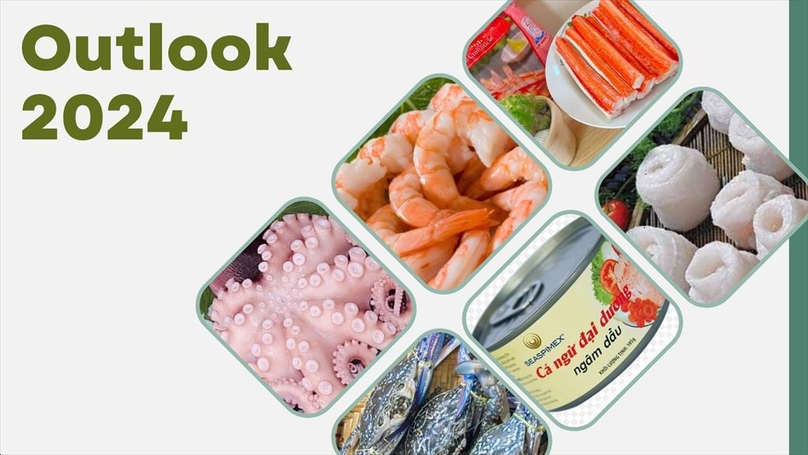
Vietnamese seafood industry looks at H2 recovery amidst export pricing, competition challenges
The Vietnam Association of Seafood Exporters and Producers (VASEP) expects a second half recovery for the industry, pushing 2024 exports to $10 billion as prices of pangasius and shrimp increase.
The Vietnam Association of Seafood Exporters and Producers (VASEP) expects a second half recovery for the industry, pushing 2024 exports to $10 billion as prices of pangasius and shrimp increase.
It says seafood production and export will face many difficulties this year, slowing down the recovery process.
A VASEP report has made 10 observations on market trends this year, including some seafood export estimates.
1. Inflation has been curbed in key nations and the global economic downturn has bottomed out, but recovery is gradual, impacting demand for seafood. The Russia-Ukraine crisis, fighting in the Middle East and other global geopolitical events will surely impair global trade, including that of seafood. Transportation costs have risen, as have the prices of basic materials for aquaculture and seafood processing. In 2024, a new inflation storm can impact seafood consumption.
2. The downward trend in prices for many aquatic species may last until the end of the first half of 2024.
3. Demand is recovering slowly in the U.S. market and there is an increasing trend to import cheap shrimp from Ecuador. Shrimp exports to the U.S. will be more difficult if anti-subsidy taxes are imposed.
4. Demand will recover more strongly in China, but prices are low in this market, making it difficult for Vietnamese seafood to compete.
5. Feed costs will continue to be a major challenge for both shrimp and pangasius farming businesses.
6. In terms of pricing and supply, Vietnamese shrimp will face stiff competition from Ecuador and India. This situation could last until the first half of the year. (World shrimp production is expected to rise 4.8% to 5.9 million tons in 2024). Ecuador and India have been boosting their market shares in the U.S., China, EU and Japan and increasing exports of processed shrimp.
7. Pangasius inventory in the U.S., China, and EU markets will cease to be a problem and export prices will increase again in the second half of the year.
8. The Illegal, unreported and unregulated (IUU) yellow card continues to be a challenge for the seafood industry. If it is removed in 2024, exports to the EU will stagnate because the procedures for confirming and certifying exploited seafood are still inadequate, with resources, human resources and infrastructure not meeting the requirements. Tuna, squid and octopus will be among the most affected species.
9. The trend of outsourcing has increased after China banned imports of Japanese seafood, causing Japanese factories to rush to Vietnam to find processing partners.
10. Vietnam's seafood exports could gradually rebound as the situation becomes more positive in the second half of the year. Seafood firms could help return export revenues to $9.5-10 billion in 2024 with shrimp exports reaching $4 billion; pangasius, $1.9 billion; and the rest of the products, $3.6-3.8 billion.
In 2023, high inflation, reduced demand, large inventories, and falling export prices are likely to see seafood export value fall 17% year-on-year to about $9 billion.




